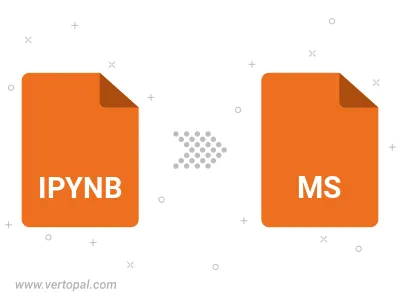Convert IPYNB (Jupyter Notebook) to MS
Convert IPYNB (Jupyter Notebook) documents to MS format, edit and optimize documents online and free.

The IPYNB file extension stands for "Interactive Python Notebook" and is used exclusively with Jupyter Notebook. It is a JSON file format that contains a complete record of user sessions, including code, narrative text, equations, and visualizations. The IPYNB files facilitate reproducible research and easy sharing of data analysis workflows. Originating from the IPython project, Jupyter Notebook has expanded its capabilities to support multiple programming languages, making it a versatile tool in the data science and machine learning communities. The format's history traces back to the early 2010s when it was developed to enhance interactive computing and collaborative work.
The MS file extension, short for "Manuscript", is associated with the roff (runoff) document formatting system used in Unix-like operating systems. It is part of the GNU roff (groff) implementation, which formats documents such as letters, memoranda, reports, and books. Historically, it evolved from the Multics runoff system in the 1960s and became integral to Unix documentation. The MS macro package supports features like cover pages, table of contents, numbered headings, and multi-column layouts.
Upload a IPYNB (Jupyter Notebook) document by dragging it into the designated area.
Select customization options for IPYNB (Jupyter Notebook) to MS conversion, then click Convert.
Give the converter a few seconds, then download your MS file.

Convert IPYNB (Jupyter Notebook) to MS, choose paper size and change page orientation to portrait or landscape.
Convert IPYNB (Jupyter Notebook) to MS and change the margins of the document.
Choose a template to change the style, and look and feel of your IPYNB (Jupyter Notebook) file and convert it to MS.
Execute Vertopal CLI commands to convert IPYNB (Jupyter Notebook) document into MS document.